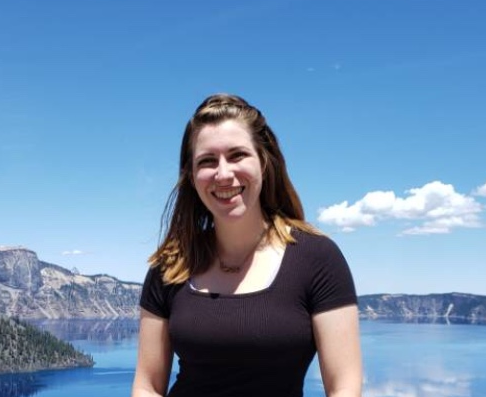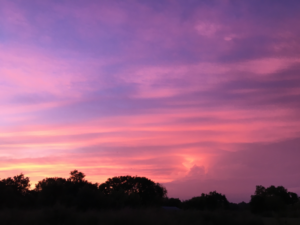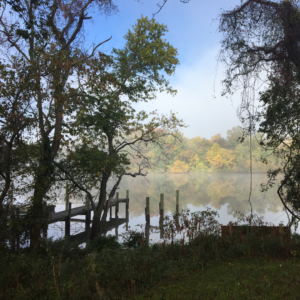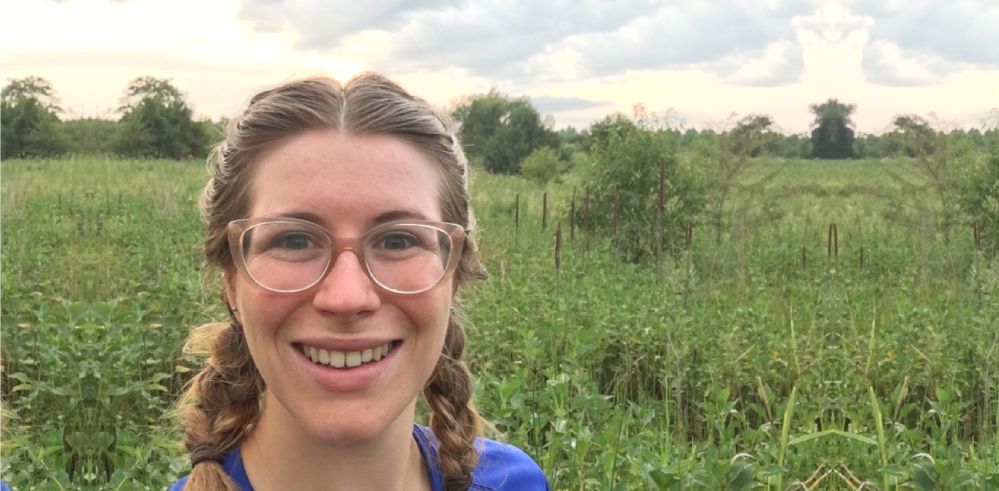 by Genevieve Wall
by Genevieve Wall
Spending quality time around local waterways deeply impacted my childhood. I grew up in the Petworth neighborhood of Washington, D.C., and on weekends, my family would frequently make the trek over to Rock Creek Park. My younger sister and I would scramble over the rocks, reach our hands into the soft silt at the bottom of the creek, and peer at the squirming critters underneath. Although we loved to swim, after heavy rainstorms, my dad would warn us not to — a warning which we’d either flat-out ignore, or, more mischievously, pretend to comply, and then stage a convenient slip on the rocks until we were soaked with brown creek water.
At the time, I didn’t understand why a creek or river might be safe to swim in one day, and potentially unsafe the next. But as an adult, I find myself sympathizing with my equally-exasperated-and-endeared dad at the memory of the two of us charging, care-free, into the creek.
 I came to the James River Association through an Americorps post last year, when I lived and worked out at Presquile National Wildlife Refuge for eight months at the James River Ecology School. My position was officially supervised by the US FWS, but most of my working hours were spent with the Education staff at JRA. The partnership between the US FWS and JRA allows for thousands of students to visit the diverse island refuge each year and learn about the plants and animals that call it home. During the day at Presquile, bald eagles soar, Atlantic sturgeon breach, osprey dive, black rat snakes slither, and songbirds chirp. But living on the island full-time, I also got to see some other sights, sights rarely experienced by day-comers — the glittering galaxies of fireflies in the grasslands in May, coyotes packs yipping and howling to each other, and the constant ebb and flow of one season into the next.
I came to the James River Association through an Americorps post last year, when I lived and worked out at Presquile National Wildlife Refuge for eight months at the James River Ecology School. My position was officially supervised by the US FWS, but most of my working hours were spent with the Education staff at JRA. The partnership between the US FWS and JRA allows for thousands of students to visit the diverse island refuge each year and learn about the plants and animals that call it home. During the day at Presquile, bald eagles soar, Atlantic sturgeon breach, osprey dive, black rat snakes slither, and songbirds chirp. But living on the island full-time, I also got to see some other sights, sights rarely experienced by day-comers — the glittering galaxies of fireflies in the grasslands in May, coyotes packs yipping and howling to each other, and the constant ebb and flow of one season into the next.
I have a deep passion and respect for nature, and I take joy in facilitating connection between students and the outdoors. So I was delighted when JRA told me they wanted to have me back on as an Education staff!
Unfortunately, COVID-19 hit right as our spring season was due to start. While that has drastically changed the kinds of programs we’re able to offer, it was inspiring to see our team adapt on the fly to create and distribute online education resources. Additionally, I got to join the Advocacy team as the 2020 Water Quality Coordinator, where I support the James River Watch program.
 The James River Watch is a citizen science program where volunteers go out to different places along the James River watershed every Thursday and collect samples of river water. We collect data about temperature, conductivity, and turbidity — but the most central piece of information we gather is about fecal coliform bacteria. Fecal coliform bacteria – like E. Coli and Enterococcus – can get into the river from sewer systems or run-off, and make people sick. (This, crucially, was the piece of information I didn’t grasp as a child — and the source of much parental exasperation.) Our program helps get out a weekly measurement of those bacteria so people can make an educated decision about whether they want to go into the river for kayaking, swimming, rafting, or boating — or if they just want to watch from the shore this week.
The James River Watch is a citizen science program where volunteers go out to different places along the James River watershed every Thursday and collect samples of river water. We collect data about temperature, conductivity, and turbidity — but the most central piece of information we gather is about fecal coliform bacteria. Fecal coliform bacteria – like E. Coli and Enterococcus – can get into the river from sewer systems or run-off, and make people sick. (This, crucially, was the piece of information I didn’t grasp as a child — and the source of much parental exasperation.) Our program helps get out a weekly measurement of those bacteria so people can make an educated decision about whether they want to go into the river for kayaking, swimming, rafting, or boating — or if they just want to watch from the shore this week.
The James River is beautiful and alive, and the vast majority of the time, it’s a wonderful place to recreate. I love enjoying some active time along the James! But at least now I have the wisdom to know that a good guideline is to wait 48 hours after heavy rain before going in the water — and the opportunity to help other people gain that knowledge as well. So, the next time you’re planning a weekend adventure to the river, check out our data on Swim Guide or our web site www.jamesriverwatch.org, and you can enjoy the outdoors in confidence!

